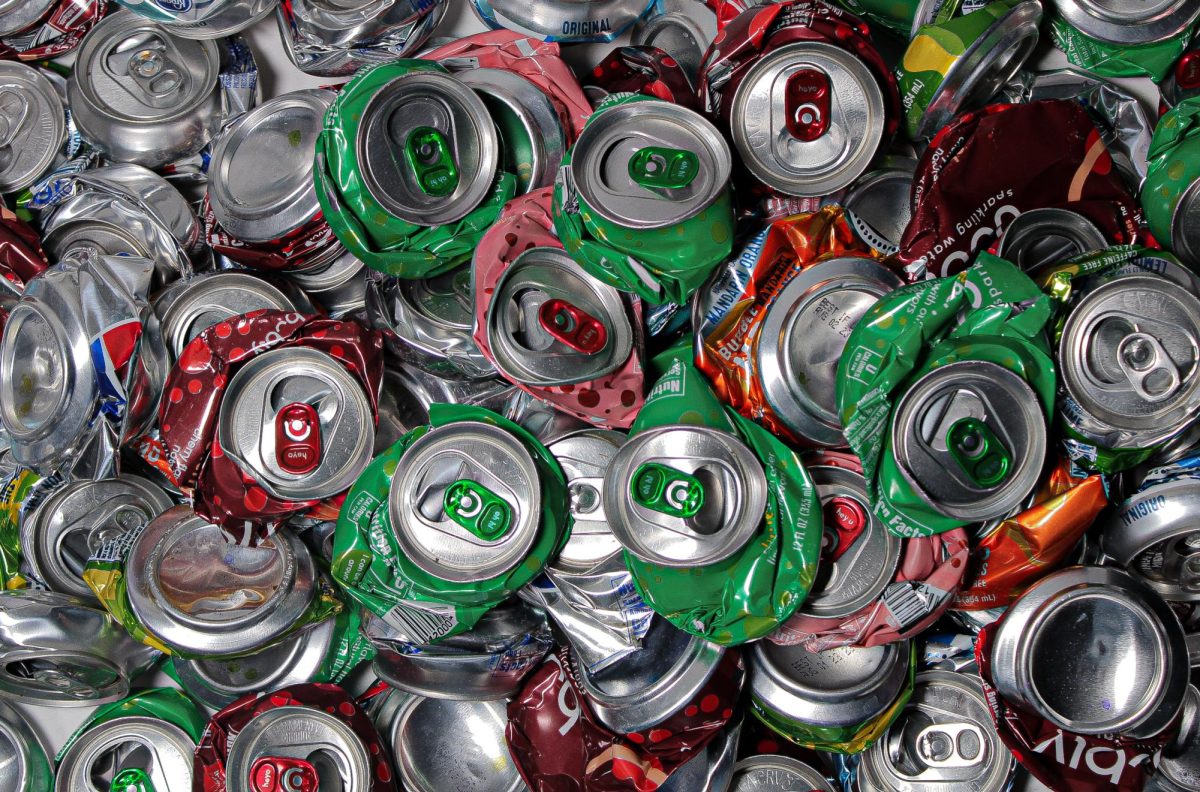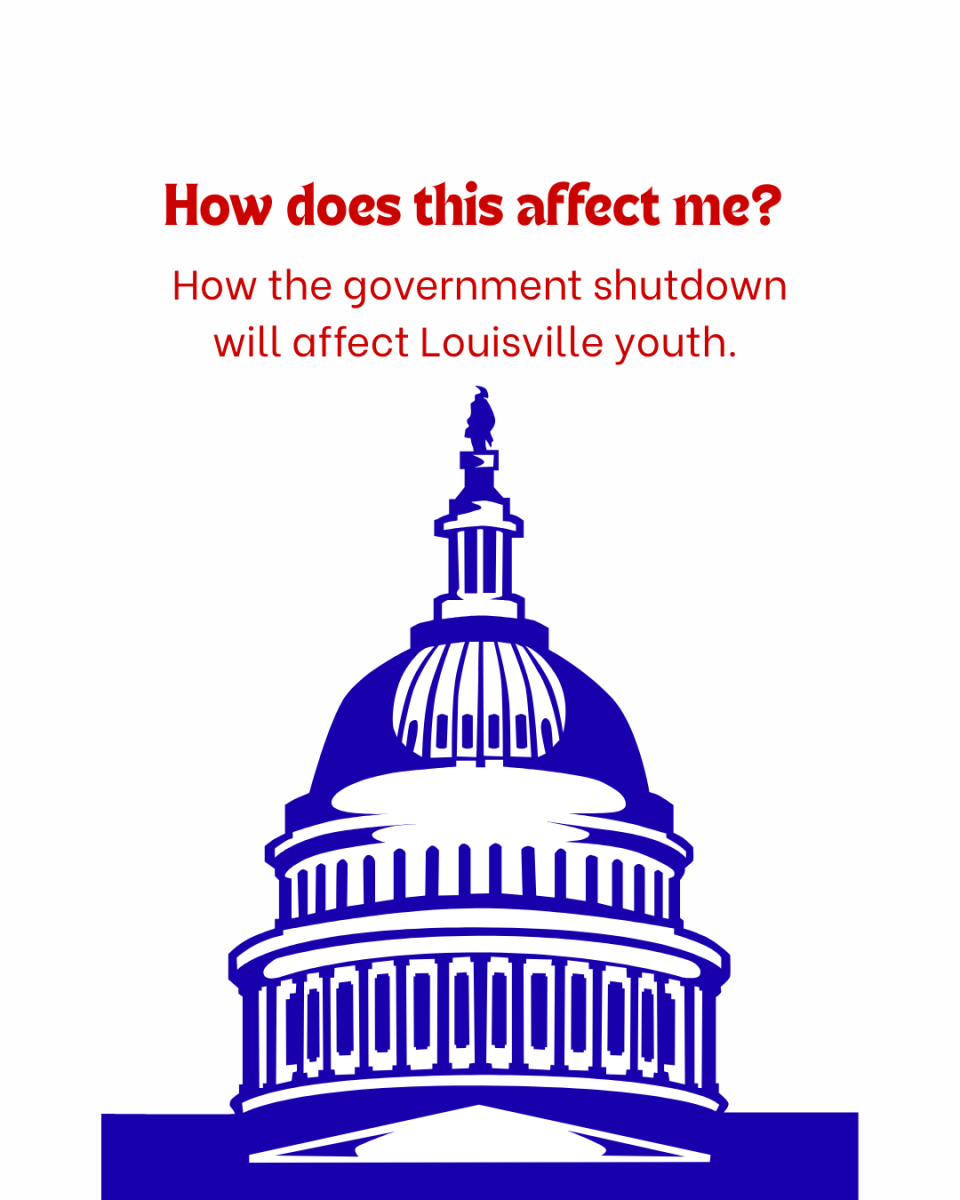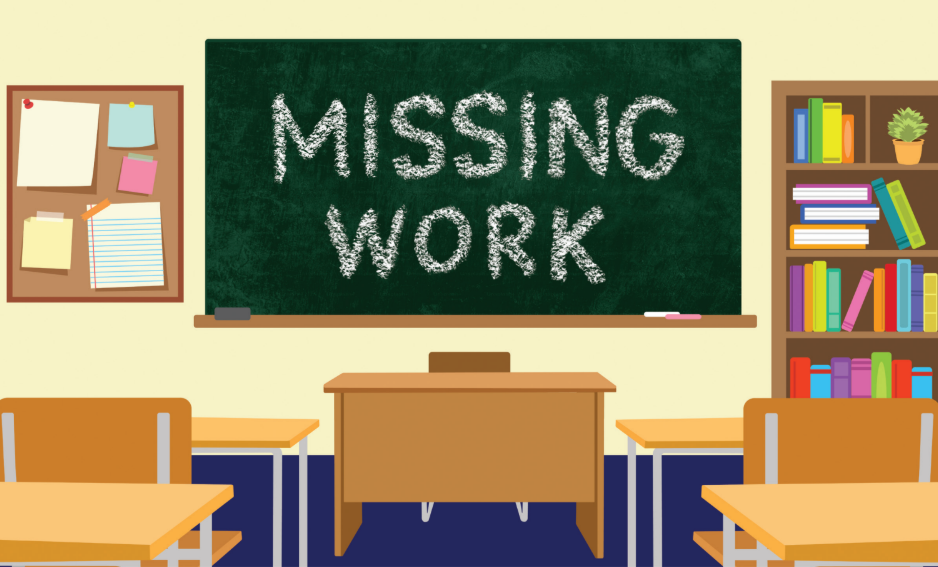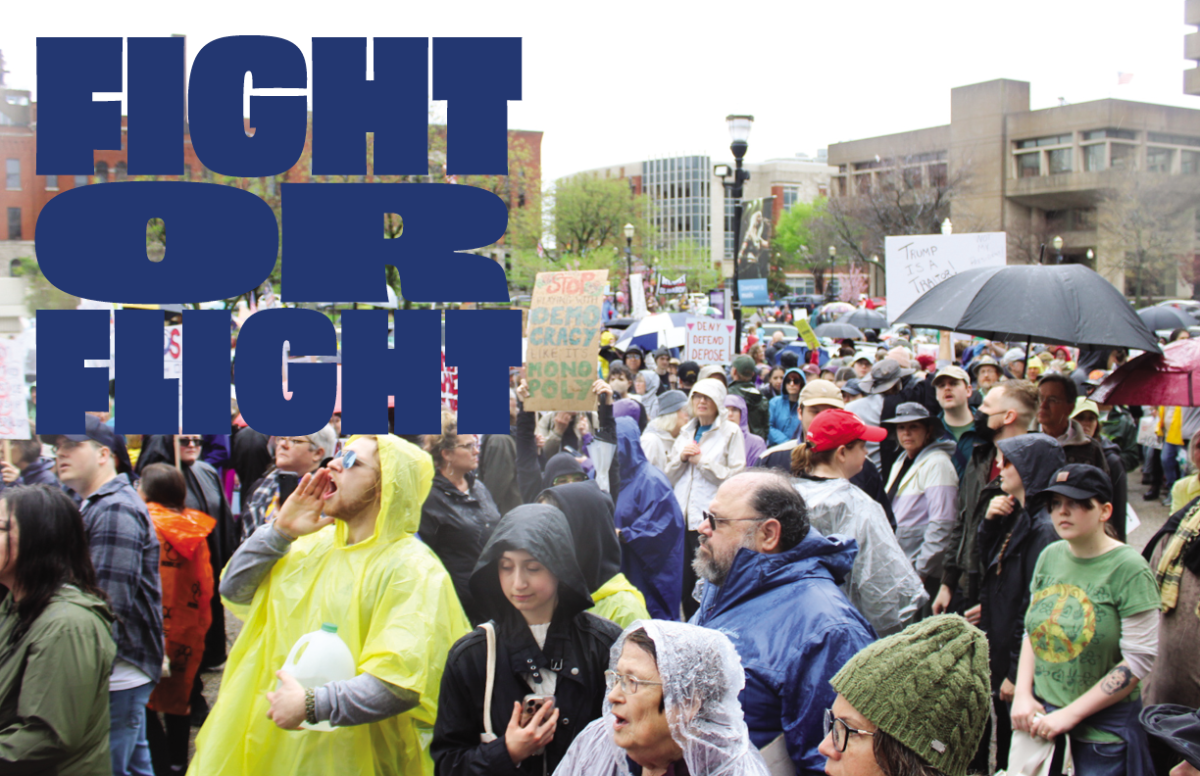I’m sure you’ve seen the logo hundreds of times over: the loop of arrows, folding back on themselves in a clockwise formation. Plastered on everything from cardboard boxes to the very bins themselves, this insignia has become a universal symbol for reducing, reusing, and recycling.
The well-known recycling symbol has a name: the Mobius Loop. Despite being so familiar, its arrows conceal much more than what can be seen at first glance. Like the Mobius Loop, there are many aspects of recycling that aren’t common knowledge — parts we take for granted or treat as givens — no matter how simple the process may seem. Even the phrasing, “to throw something away,” is vague. We never really stop to think about the process. It’s expected that our recycling will end up where it’s supposed to be, but that isn’t always how things work.
But I’ll explain all of that later. First, we should explore the path our recycling takes.
Where Is “Away?”
After we throw our paper or cardboard boxes into the recycling bin, we rarely see them again. While it may vary from city to city, there is a common path that all recycling takes. The first step is on us: the initial disposal of each product. Louisville functions as a single-stream system, which designates a single bin for all recycling, not separate ones for different materials. This means that, instead of one bin for takeout boxes and one for yesterday’s paper, we have an all-encompassing blue bin. Our participation ends at the disposal. However, the process continues from there.
Whether different kinds of recyclables are grouped together or not, they are collected — either by a government entity or contracted company — and taken to a processing facility. In Louisville, there are two primary companies that manage recycling: Westrock and Rumpke. Rumpke, despite having trucks and dumpsters that operate within Louisville, is headquartered in Cincinnati. According to Karen Maynard, the public education supervisor for the Public Works Solid Waste Division, Westrock is local, making it the go-to for residential recycling.
Once the waste is at the facility, workers on a conveyor line attempt to quality control, pulling off objects that can’t be processed. For example, pieces of cardboard with grease that end up in facilities that cannot handle them have to be manually removed. Plastic bags are another commonly prohibited item because they stretch and can end up wrapping around the machinery. Unfortunately, workers can’t catch everything, which leads to recycling contamination. This is a recurring issue, with entire loads sometimes being rendered unusable. These loads are simply referred to landfills.
After the contaminants have been removed and the rest pass through, the recycling is sorted by type to be sent to facilities with different processing capabilities, ranging from plants that work solely with paper to those that focus on glass beneficiation, and everything in between.
“They’ll use gravity, air, magnets, eddy currents — anything that’s going to help move material automatically is used to separate everything into its own commodity,” Maynard said.
The materials each have unique ways of being remade into new products, often kept under wraps by the respective companies that process them for the sake of competition and profit. It is, after all, still a business.
If everything goes according to plan, the raw material can be packaged and sent out to buyers. From there, it’s made into products once again, and the cycle begins anew.
The Emergence Of the Recycling Movement
Advertising and educational messaging surrounding recycling is extremely prominent, ingraining a sense of responsibility into the minds of many, especially youth. In the 1970s, the effects of America’s long obsession with disposable consumer products were catching up to us. As a response, both the government and corporations collaborated to create the rules that are familiar to us now. Those regulations still impact society today.
The way in which awareness about recycling is presented seems almost frantic and can be found nearly everywhere. Articles flood social media feeds, advertising “green” products and providing personal lifestyle tips on how to reduce one’s carbon footprint. Even the recycling bins themselves, which are typically bright colors, are structured to draw attention. In your schools, homes, and businesses, the bins stick out like a sore thumb. If recycling has been in the public eye since the ‘70s, then why is it still not reaching its full potential?
The answer to this isn’t a simple one.
Breaks In the Loop
Whether it be due to a constant shifting of responsibility, lack of education, failing infrastructure, or basic inability to participate, there are many barriers that continue to hinder recycling as a whole, including within Jefferson County Public Schools (JCPS).
The district has taken steps throughout the years to be more sustainable, yet they aren’t always seen to fruition. In 2017, recycling initiatives had begun to become a priority in JCPS with the introduction of recyclable cardboard trays. But in 2020, the trays stopped being supplied to JCPS following supply chain issues, and JCPS returned to styrofoam trays. Additionally, JCPS has made attempts to enforce recycling in all of their schools, but this has been tough to maintain.
The district follows the Kentucky Revised Statutes, specifically chapter 160.294, which essentially says that each local board of education is required to have a program for, at the very least, white paper and cardboard. The 2022-23 official JCPS Facility Compliance Manual also claims that all conventional recyclables should not be taken to landfills, including plastics and metals. Although these rules are in place, they are not always successfully enforced.
“We do have a recycling dumpster, but what I found when I got here was that it was normally getting thrown away,” said Andrew Gray, a teacher at the J. Graham Brown School. “It’s kind of up to us to make sure it gets done.”
Joseph Irwin, the environmental coordinator for JCPS, and his department hear reports once every couple months of schools combining their recycling and trash. However, they strive to reach out and solve these occurrences as soon as possible.
“It’s not a common thing that people reach out to me but if someone reports that to me or our department or one of our people, we immediately address that. We don’t want people’s efforts to go to waste when they’re trying to help the environment and save the district money,” he said.
Despite efforts by Irwin and his team, considering that there are 165 schools in JCPS, making sure each and every one is up to standard is a massive task. According to Irwin, custodians are meant to be the ones making sure that schools’ recycling ends up in the appropriate dumpster. However, after seeing recycling being thrown into the dumpsters alongside their trash counterparts, how can students trust that their schools properly recycle each week?
As a result, a common scene now, all across JCPS, is the advent of environmental clubs or other student groups associated with managing recycling for schools. This helps students ensure that these policies are being carried out. Gray initially began Brown’s environmental club as a recycling effort eight years ago. Similarly, Ballard High School, according to Irwin, has a student group dedicated to taking out the school’s recycling.
While the effort put forth by environmental groups is admirable, to see these recycling procedures reach their full potential, they must not just be performed by students but prioritized by the district. The issues that JCPS experiences are not isolated. There are bigger issues at play that complicate recycling both in Louisville and nationwide.
Infrastructure Issues
For years, the United States relied on exports of recyclables to China. At the time this agreement was created, it was mutually beneficial. China needed raw materials to fuel their growing industries, and we needed to get rid of our junk. In fact, in 2016 alone, the United States exported about 16 million tons of papers, metals, and plastics out to China. However, this would quickly prove to be unsustainable. According to a 2020 report by the Columbia Climate School, due to recycling contamination, only around 30% of this could actually be recycled and used, causing heavy pollution within China. In 2018, China implemented a new policy that limited the import of many recyclable items, effectively shutting down the main route for waste out of the United States.
Due to America’s continued reliance on China, the domestic recycling industry was not fully developed. As soon as the trash started to pile up, the shortcomings of America’s recycling infrastructure began to show. The inability to properly process things on a national level applied pressure to city governments. Unless local recycling plants could afford the increased inflow of materials, they would simply shut down. Recycling struggled. Not only did it have to be profitable, but it had to be profitable under higher pressure than ever before. To stay in business, making money became the number one priority. Transporting and processing materials is costly, and can often lead to fees placed on citizens to make up for lost profit.
For example, in Louisville, recycling can get tricky for those outside of our Urban Services District (USD). The USD extends to the old city limits, which were from before the merging of the city of Louisville and Jefferson County. When they merged in 2003, the outer county didn’t want to pay the increased taxes that covered urban services, so the recycling stayed within the old limits. The interior area, now called the USD, has access to recycling provided by the city. Those living outside the USD, however, have to sign up to have recycling and pay an extra fee alongside it. Moreover, some apartment complexes don’t even have recycling bins, meaning that to recycle, residents have to make the trip to their nearest drop-off station, if they even know it exists.
The Struggle Of Individuals
The responsibility of overseeing recycling and other sustainability efforts is commonly hefted onto the citizen, the individual, the consumer, rather than the corporations. We are taught to make all these changes in our personal lives, or to go out of our way and altruistically tackle this problem. Instead of everyone forming a more united front against the issue, responsibility keeps getting passed around.
“Some people don’t want to learn more. Some people just want to throw their trash away and be done with it,” Maynard said.
The growing popularity of environmental clubs is a prime example of the burden that faces us as the next generation. Though there are those that are ready to take action, this responsibility being placed on the individual doesn’t necessarily mean that everyone is ready to carry it. Not everyone is distinctly aware of the real impacts. Even if they are, when it comes to global issues, one’s own actions can seem insignificant in the face of a growing population.
“It can be hard. And that comes pretty much with any behavior that is in some way for sustainability and for the environment. If it feels difficult, and you don’t want to do it, it’s easy to say, ‘One person’s not going to make a difference anyway,’” Maynard said.
Even when companies do end up taking on some responsibility that is typically placed on individuals, it doesn’t come without conditions. Take the current trend toward green commerce, for example. Though the companies themselves are actually using recycled materials, the consumer is still required to actually buy those products. The choice, and ergo the responsibility, falls back on us.
The renewable quality of products is also frequently utilized in marketing campaigns. The bare minimum of ecological conservation or awareness — as these renewable products are more often than not still produced in factories that use fossil fuels and exude greenhouse gases — is touted as a selling point. Because of this, to many, it seems that if cleaning up our planet isn’t profitable for companies, it won’t be done.
People trying to be more conscious about recycling can be dissuaded from taking time to buy certain products or to organize their trash because of the extra effort and layer of complication. Additionally, many citizens are concerned that even if they put in the conscious effort to recycle that it still won’t pay off.
This brings up another concern that citizens may have: If they’re putting in all this effort, how much of what we throw away is actually recycled? According to the United States Environmental Protection Agency, over half of it isn’t. In 2018, the United States produced over 292 million tons of solid waste. Of that waste, 48.2% of it was plastics, metals, glass, and paper or paperboard. That’s around 140.9 million tons of recyclable material. Only 69.1 million of that was actually recycled. Obviously they’re not just tossing it away for no reason, so what’s happening to that missing 71.8 million tons?
This is where profitability comes into play again. Distance and material type both impact shipping costs.
Plastics are tricky in this regard. Though they’re relatively cheap to process and move, they can just as easily get contaminated with incompatible plastic types or residual food waste. Companies won’t buy them unless they’re relatively “pure,” so those contaminated loads have to be dumped. While single-stream recycling makes the process much easier for consumers, and makes people more likely to recycle as a result, all the materials being collected together increases the chances of contamination drastically.
The point? Recycling is a balancing act between convenience of participation with the efficiency of the recycling process. Despite the fact that education about the issue is extremely important, making it appear too complicated can prevent people from even trying to participate. On the other hand, too much simplicity leads to problems for the recycling plants.
Still, Maynard urges people to contribute where they can.
“It’s participating — it’s only making that system more worthwhile. Because the trucks are coming, no matter what,” she said. In the face of all this, the issue can seem insurmountable. However, as youth set to inherit the planet, we can’t afford to stay complacent. So then, what’s the next step?
What Can We Do?
The first step toward a solution is education.
Both staying informed and informing others are ways in which one can contribute. Irwin believes this is especially important in regards to younger students.
“We start with the elementary schools so that they can carry that knowledge to middle and high school. It’s more difficult to get the middle and high schoolers involved,” Irwin said.
Diane Moon, public education coordinator for Louisville’s Solid Waste Management, agrees with his sentiment, and brought up another important point.
“When we do events, we do try and talk to younger people because they are actually the ones who can influence their adults,” Moon said. I
t’s important to realize that there are people trying to make changes. The technology of recycling plants is advancing all the time. The efficiency of the process improves alongside the technology. On the legal side of things, there are constant efforts with Extended Producer Responsibility (EPR) bills. EPRs essentially force companies to be fully responsible for the entire lifetime of a product, including its disposal. Whether it be through financial aid or operational responsibility, the ideal plan would be to lessen the burden on buyers as a whole. These improvements, however, won’t just fix things on their own. More efficient recycling plants still require us to recycle, and bills don’t pass without support. This is yet another thing we can’t take for granted and just expect to happen. The importance of participation, even in the smallest ways, cannot be overstated.
Nicholas Neagle, a senior at the J. Graham Brown School, is a member of the school’s environmental club. At Brown, a group of students alongside Gray have taken it upon themselves to make the school a more environmentally friendly place. Not only do they take care of the recycling, but they also organize events and promote involvement from all ages of students. From making trash art to putting together the school-wide Earth Day celebration, they want to encourage students to be more conscious of what they throw away.
The Brown School is a K-12 school, giving the message an even wider reach. Neagle sees this as essential.
“Having these options, this availability of ways you can help, really allows environmentalism to grow and expand and reach new generations,” he said.
The issue can seem monumental, and its components are parts of life that people don’t normally take into consideration. Despite all this, there are those like Neagle that are taking action. It’s a heavy weight to have to carry, but not one that should be carried alone. Anyone can help. No matter how small one’s choices may seem, no change can be made without effort. Getting involved, being informed, and even just making sure to recycle your papers are all great steps forward. They’re steps that youth need to take if we want what’s best for the planet that’s being left to us. Though the pressure of all this may feel crushing, the only way to lighten the burden is to work together. •


















